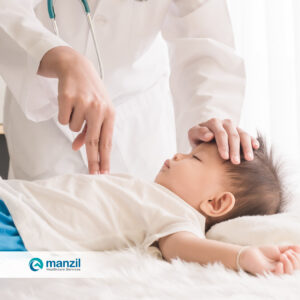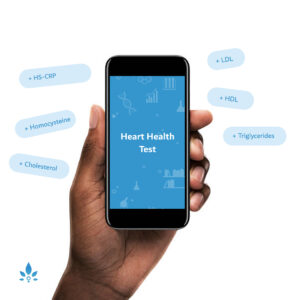COVID-19: Questions and Answers


What is COVID-19?
COVID-19 is an infectious respiratory disease caused by the most recently discovered virus, SARS CoV-2.
I’m confused. What’s the difference between Coronavirus, COVID-19, SARS and SARS CoV-2?
The coronaviruses are a family of viruses which cause illness in humans and animals. There are many types of human coronaviruses and some of these cause mild upper respiratory tract illnesses.
In 2019 a novel coronavirus was identified that had not previously been seen in humans. The World Health Organisation (WHO) designated it COronaVirus Disease 2019, abbreviated to COVID-19. The virus responsible for COVID-19 has been given the name Severe Acute Respiratory Syndrome Coronavirus 2 (SARS-Co-V-2). It was given this name because genetically it is similar to the virus responsible for the SARS (Severe Acute Respiratory Syndrome) outbreak in 2003. However, the two viruses are different.
What are the most common symptoms of COVID-19?
The most common symptoms of COVID-19 are fever, dry cough, and shortness of breath, or difficulty breathing.
What are the less common symptoms of COVID-19?
Less common symptoms include:
- Tiredness
- Aches and pains
- Nasal congestion
- Headache
- Conjunctivitis
- Sore throat
- Diarrhoea, nausea or vomiting
- Loss of taste or smell
- A rash on the skin or discoloration of fingers or toes.
Who is most vulnerable to COVID-19?
People over 65 years, and those with underlying medical problems like hypertension, heart and lung problems, diabetes, or cancer, are at higher risk of developing serious illness after being infected with SARS CoV-2.
Whilst men and women are at equal risk of being infected with SARS CoV-2, it is thought that males are at higher risk of suffering from severe symptoms and dying from the infection than females. For a detailed review on the topic of risk factors, click here.
I am pregnant, but otherwise healthy; why am I considered high risk?
There is no evidence that pregnant women are more likely to get seriously ill following infection with SARS CoV-2. However, pregnant women do sometimes experience complications from other viruses, such as the flu. As a precautionary measure women who are pregnant are included in the high risk group. If you are pregnant, maintain good personal hygiene (wash hands regularly), and if you’re outside your home, wear a mask, and maintain social distancing measures. Unless advised otherwise, you should still attend all antenatal appointments.
Can children catch COVID-19?
Available evidence suggests that children are not at higher risk of being infected by SARS CoV-2 than adults. Children and young adults typically show very mild or no symptoms of the infection.
There have been reports of a small number of children showing symptoms of multisystem inflammation following SARS CoV-2 infection. The association between the two is poorly understood, but the increase in cases recently suggests a potential link. Experts have termed the disorder Pediatric Inflammatory Multisystem Syndrome Temporally associated with SARS CoV-2 (PIMS-TS). Children showing symptoms tend to recover well.
How does COVID-19 spread?
The disease spreads primarily from person to person through small droplets from the nose or mouth, which are expelled when a person with COVID-19 coughs, sneezes, or speaks. These droplets can land on objects and surfaces around the person such as tables, doorknobs and handrails. People can become infected by touching these objects or surfaces, then touching their eyes, nose or mouth. The likelihood of catching COVID-19 from contaminated food packaging or products is low, but the risk can be minimised further by thoroughly washing hands with soap and water before eating.
Can COVID-19 be caught from someone with no symptoms?
People with COVID-19 are most contagious when they are symptomatic; however, there is a possibility that a person with a mild cough and other minor symptoms could release particles that then infect others. It is not yet clear how often this happens.
What should I do if I come into close contact with someone who tests positive for COVID-19?
If you have been in close contact with someone with COVID-19 (defined as coming within 6 feet, or 2 metres), you should self-quarantine for at least 14 days. You should also alert those who you have been in close contact with over the preceding days. If your country/region of residence has a contact tracing app you should also use this.
What is the difference between quarantine, self-isolation and social distancing?
To quarantine is to separate yourself from others and restrict your movements. In the context of COVID-19, quarantine is recommended for those who have (or may have) been exposed to SARS CoV-2. Some people may be asked to quarantine if they have engaged in activities that put them at a higher risk of being exposed to the virus, such as air travel. The incubation period of COVID-19 is thought to be between 2 and 14 days; so if after 14 days you have not shown symptoms of COVID-19, your chances of spreading the virus are diminished, and you no longer need to quarantine.
If you develop symptoms of COVID-19 you should self-isolate to avoid exposing others. This means you do not leave your primary residence or home, do not go to work or school, and avoid public places. You should only see those who live in your primary household. If your symptoms worsen, you should seek immediate medical advice. It is recommended that people continue to self-isolate for 14 days after symptoms disappear, as we do not yet know how long a person remains infectious for.
Some individuals who are high risk, such as the elderly or those with underlying chronic diseases, may opt to self-isolate to minimise their chances of being exposed to the virus, until the risk in a particular region or country is reduced.
Many countries across the world have requested that their citizens implement some form of social distancing. This is applicable to all, even those with no known exposure to COVID-19. The WHO guidelines recommend maintaining a distance of at least 1 metre from other people; however, many countries have been using 2 metres as a distance, to further lower the risk of transmission.
What can I do to protect myself and prevent the spread of the disease?
- Regularly and thoroughly clean your hands with an alcohol-based hand rub or wash them with soap and water.
- Maintain at least 2 metres between yourself and others.
- Avoid touching your eyes, nose and mouth.
- Stay home and self-isolate for at least 14 days even with minor symptoms such as a cough, headache, or mild fever, until you recover.
- If you have a high fever, persistent cough and difficulty breathing, seek medical attention. If possible, telephone in advance of attending any medical facility, so that staff can take the necessary precautions and follow the directions of your local health authority.
Is there a vaccine, drug or treatment for COVID-19?
While some Western, traditional or home remedies may provide comfort and alleviate the symptoms of mild COVID-19, there are no medicines that have been shown to prevent or cure the disease yet. Over-the-counter pain relief medicines, such as paracetamol/acetaminophen can help relieve mild symptoms. Patients are also encouraged to rest and increase their fluid intake. Clinical trials on various Western and traditional medications and vaccines are on-going at a much faster rate than usual due to the immediate need for COVID-19 remedies.
How long does it take after exposure to SARS CoV-2 to develop COVID-19 symptoms?
The time between exposure to the virus and the moment when symptoms start is commonly around 5 to 6 days but can range from 1 – 14 days.
What is the connection between COVID-19 and animals?
SARS CoV-2 is spread through human-to-human transmission however, for many of the coronaviruses, the virus originated in animals before passing to humans. The possible animal source of SARS CoV-2 has not yet been confirmed but research is ongoing.
Can I catch COVID-19 from my pet?
Several dogs and cats (domestic cats and tigers) who have been in contact with infected humans have tested positive for SARS CoV-2. However, there is no evidence to date that pets can transmit the disease to humans. Regardless, it is a good idea to implement basic hygiene measures after handing animals and their food, such as hand washing, to minimise the risk of infection, as pets are known to spread other viral diseases to humans.
How long does the virus survive on surfaces?
Touching a contaminated surface is not the main mode of virus transmission. Studies have shown that the COVID-19 virus can survive for up to 72 hours on plastic and stainless steel, less than 4 hours on copper and less than 24 hours on cardboard. It is important to note that cleaning surfaces with any common household disinfectant will kill the virus. Washing your hands regularly and avoiding touching your eyes, mouth and nose will reduce the risk of infection.
Are antibiotics effective at treating or preventing COVID-19?
No. Antibiotics do not work against viruses; they only work on bacterial infections. COVID-19 is caused by a virus, so antibiotics do not work.
Should I get tested for COVID-19?
There are two types of tests available; viral tests check for current infection, and antibody tests check for previous infection. Antibody tests are not currently widely available.
Not everyone with symptoms of COVID-19 will need a test. If symptoms remain mild, most people will be able to self-isolate until they have passed. However, if you live in an area with malaria or dengue fever you should immediately seek medical assistance if you develop any novel symptoms.
The tests used are not 100% accurate, so if you test negative, but have symptoms of COVID-19, it is recommended that you self-isolate until they have passed.
To date, it is not known if people can be reinfected with SARS CoV-2 after recovery.
Sources:
- Jin, Jian-Min, et al. “Gender Differences in Patients with COVID-19: Focus on Severity and Mortality.” Frontiers in Public Health, 29 Apr. 2020, doi:10.1101/2020.02.23.20026864.
- “Coronavirus (COVID-19) Frequently Asked Questions.” Centers for Disease Control and Prevention, Centers for Disease Control and Prevention, 29 May 2020, www.cdc.gov/coronavirus/2019-ncov/faq.html.
- “Naming the Coronavirus Disease (COVID-19) and the Virus That Causes It.” World Health Organization, World Health Organization, www.who.int/emergencies/diseases/novel-coronavirus-2019/technical-guidance/naming-the-coronavirus-disease-(covid-2019)-and-the-virus-that-causes-it.
- “Pregnancy and Coronavirus.” NHS Choices, NHS, www.nhs.uk/conditions/coronavirus-covid-19/people-at-higher-risk/pregnancy-and-coronavirus/.
- “Q&A On Coronaviruses (COVID-19).” World Health Organization, World Health Organization, www.who.int/emergencies/diseases/novel-coronavirus-2019/question-and-answers-hub/q-a-detail/q-a-coronaviruses.
- “Questions and Answers on the COVID-19: OIE – World Organisation for Animal Health.” OIE, www.oie.int/en/scientific-expertise/specific-information-and-recommendations/questions-and-answers-on-2019novel-coronavirus/.












































